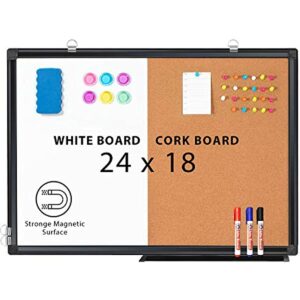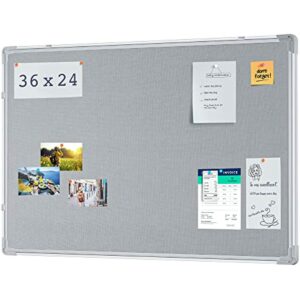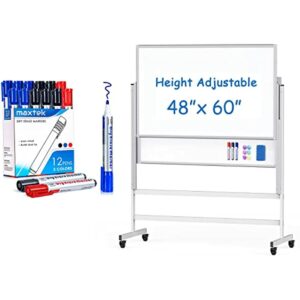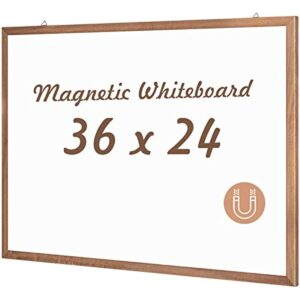Introduction

Welcome to our comprehensive guide on understanding and choosing the right whiteboard size for your needs. Whiteboards are essential tools in various settings, from classrooms and conference rooms to offices and homes. The size of a whiteboard can greatly impact its usability and effectiveness in fulfilling its intended purpose.
Understanding Standard Whiteboard Sizes

The size of a whiteboard plays a crucial role in its functionality and versatility. Whether you are using it in a classroom, office, or conference room, choosing the right size can greatly impact its effectiveness. In this section, we will explore the various standard whiteboard sizes available and provide valuable insights to help you make an informed decision.
-
- Small Whiteboards: Small whiteboards, typically measuring around 2 feet by 3 feet, are ideal for personal use or small group settings. They are compact, portable, and easily fit into tight spaces. These whiteboards are commonly found in individual offices or home offices, providing an efficient solution for jotting down quick notes or brainstorming ideas.
-
- Medium Whiteboards: Medium-sized whiteboards, ranging from 3 feet by 4 feet to 4 feet by 6 feet, are more commonly used in classrooms, conference rooms, and collaborative spaces. These whiteboards offer a larger writing surface, allowing for more comprehensive presentations, diagrams, or group discussions. They strike a balance between portability and functionality, making them a popular choice for various settings.
- Large Whiteboards: Large whiteboards, typically measuring around 4 feet by 8 feet or larger, are often found in spacious meeting rooms, lecture halls, or training centers. These whiteboards provide ample space for complex visual representations, extensive note-taking, and detailed illustrations. While they may not be as portable as smaller options, their size offers enhanced visibility and readability, especially in larger group settings.
When considering the size of your whiteboard, it is essential to assess the specific needs and requirements of your intended usage. Factors such as available wall space, audience size, and intended use will play a significant role in determining the most suitable whiteboard size for your needs. In the next section, we will delve deeper into the factors you should consider when choosing a whiteboard size.
Insights on Popular Whiteboard Sizes

Choosing the right whiteboard size is crucial to ensure effective communication and collaboration in any professional or educational setting. While there are various standard whiteboard sizes available, it can be helpful to gain insights into the most popular options. Understanding the popularity of certain whiteboard sizes can guide your decision-making process and help you make an informed choice.
1. 48″ x 36″ (4ft x 3ft)
This is one of the most widely used whiteboard sizes, particularly in meeting rooms, classrooms, and offices. Its versatile dimensions provide ample space for presenting ideas, jotting down notes, and brainstorming. The 48″ x 36″ whiteboard strikes a balance between being compact enough for small spaces, while still providing enough writing surface for most needs.
2. 72″ x 48″ (6ft x 4ft)
For larger spaces or settings with higher visibility needs, the 72″ x 48″ whiteboard is a popular choice. Its larger size allows for more extensive visual presentations, making it ideal for conference rooms, lecture halls, and training centers. The extra space can accommodate detailed diagrams, charts, and graphs, enhancing clarity during presentations or lectures.
3. 96″ x 48″ (8ft x 4ft)
When it comes to large-scale presentations or collaborative environments, the 96″ x 48″ whiteboard is often favored. This size is commonly found in boardrooms, conference centers, and collaborative workspaces. With its expansive surface area, it provides ample writing space for multiple users, making it ideal for group discussions, project planning, and strategizing sessions.
While these three sizes tend to be the most popular choices, it is important to consider the specific requirements of your workspace, audience, and intended use when selecting a whiteboard size. Assessing the available space, the number of participants, and the type of content to be displayed will help you determine the ideal size for your needs.
Trends in Whiteboard Size Preferences
As the demand for whiteboards has increased over the years, there have been noticeable trends in the preferred sizes of these essential tools. Understanding these trends can help you make an informed decision when choosing the right whiteboard for your needs.
1. Smaller Whiteboards for Personal Use
In recent years, there has been a rise in the popularity of smaller whiteboard sizes, especially for personal use. These compact whiteboards are typically around 24×36 inches or smaller. They are ideal for individuals who need a portable and space-saving solution, such as students, freelancers, or individuals working from home.
2. Larger Whiteboards for Collaborative Spaces
On the other end of the spectrum, there is a growing demand for larger whiteboards in collaborative spaces, such as conference rooms, classrooms, and brainstorming areas. These whiteboards are usually over 72 inches wide and provide ample space for multiple users to collaborate, brainstorm, and visualize ideas together.
3. Customized Whiteboard Sizes
Another emerging trend is the preference for customized whiteboard sizes. Many organizations now opt for tailor-made whiteboards that perfectly fit their specific requirements. This allows them to have a whiteboard that matches the dimensions of their space, whether it’s a narrow corridor or an irregularly shaped wall.
4. Aspect Ratio Considerations
While size is an important factor, the aspect ratio of the whiteboard also plays a crucial role in its usability. Traditional whiteboards often had a 4:3 aspect ratio, similar to old television screens. However, with the increasing use of digital content and widescreen displays, whiteboards with a 16:9 aspect ratio have become more popular, as they better accommodate modern content formats.
5. Shift towards Interactive Whiteboards
In recent years, there has been a significant shift towards interactive whiteboards that offer additional features and functionalities. These advanced whiteboards often come in larger sizes, such as 78 inches or more, to accommodate interactive touch capabilities and multimedia integration.
By staying informed about these trends, you can make a well-informed decision when selecting the right whiteboard size that suits your specific needs and preferences.
Factors to Consider When Choosing a Whiteboard Size

When selecting a whiteboard size, it is essential to consider various factors that can greatly impact your experience and the effectiveness of your presentations or collaborative sessions. By taking these factors into account, you can make an informed decision and choose the perfect whiteboard size for your needs. Here are some key factors to consider:
1. Available Space
The first and most crucial factor to consider is the available space where you plan to install the whiteboard. Measure the dimensions of the wall or the designated area to ensure that the whiteboard fits perfectly without obstructing other elements in the room. It’s also important to leave enough space around the whiteboard for easy access and movement.
2. Purpose and Usage
Consider the purpose and usage of the whiteboard. Are you planning to use it for brainstorming sessions, presentations, teaching, or collaborative work? The size of the whiteboard should align with the nature of your activities and the amount of content you typically need to display. For example, if you often engage in detailed diagrams or complex equations, a larger whiteboard may be more suitable.
3. Audience and Viewing Distance
Think about the size of your audience and the distance from which they will be viewing the whiteboard. If you regularly conduct meetings or training sessions with a large group, a larger whiteboard will ensure that everyone can see the content clearly, even from the back of the room. On the other hand, if you primarily work with a small team in a more intimate setting, a smaller-sized whiteboard may suffice.
4. Content Organization
Consider how you prefer to organize your content on the whiteboard. If you tend to work with multiple columns, charts, or diagrams simultaneously, a larger whiteboard will provide you with ample space to keep everything clear and organized. However, if you prefer a more focused approach, a smaller whiteboard may be more suitable for your needs.
5. Portability and Flexibility
Depending on your requirements, you may need a whiteboard that is portable and can be easily moved from one location to another. In such cases, consider the weight and size of the whiteboard, as well as the availability of mounting options or portable stands. If portability is not a concern, you can opt for a larger, wall-mounted whiteboard.
6. Budget
Finally, consider your budget when choosing a whiteboard size. Larger whiteboards generally come at a higher cost, so it’s important to strike a balance between your requirements and the financial resources available. Remember that investing in a high-quality whiteboard is a wise decision, as it will be a long-term asset that enhances productivity and collaboration in your workspace.
By carefully considering these factors, you can select a whiteboard size that perfectly suits your needs, enhances communication, and promotes effective collaboration.
Advantages and Disadvantages of Standard Whiteboard Sizes
When choosing a whiteboard size, it is essential to consider the advantages and disadvantages of standard sizes. Each size offers its own unique benefits and limitations, which can greatly impact how effectively you can use the whiteboard for your specific needs. Here are some key advantages and disadvantages to keep in mind:
Advantages of Standard Whiteboard Sizes:
- Availability: Standard whiteboard sizes are readily available in the market, making it easier to find and purchase them from various suppliers.
- Compatibility: Standard sizes are compatible with a wide range of accessories such as markers, erasers, and magnets, which are designed to fit perfectly on these boards.
- Cost-effective: Due to their popularity and high demand, standard whiteboard sizes are often more affordable compared to custom-sized whiteboards.
- Interchangeability: If you already have a standard-sized whiteboard, it can be easily replaced or upgraded with another standard-sized board without the need for adjustments.
Disadvantages of Standard Whiteboard Sizes:
- Limited Space: Standard sizes may not provide enough writing space for certain applications or larger groups, restricting your ability to fully utilize the whiteboard’s surface.
- Lack of Customization: Standard sizes may not perfectly fit your specific needs or available wall space, limiting your ability to customize the whiteboard’s dimensions.
- Less Flexibility: If you require a non-standard size or a unique aspect ratio, standard whiteboard sizes may not fulfill your requirements, forcing you to compromise on your vision.
Considering these advantages and disadvantages will help you make an informed decision when choosing a whiteboard size that best suits your needs and preferences. It is essential to weigh your specific requirements against the limitations of standard sizes to ensure you select the most suitable option for your intended use.
Conclusion
Choosing the right whiteboard size is important for optimal productivity and effective communication in various settings. By understanding standard whiteboard sizes and considering factors such as available space, audience size, and specific needs, you can make an informed decision.
Insights on popular whiteboard sizes have shown that larger boards, such as the 4×8 and 5×10 dimensions, are preferred for larger meeting rooms or classrooms. These sizes provide ample space for brainstorming, planning, and collaboration.
However, trends in whiteboard size preferences are changing, with smaller and more portable options gaining popularity. These smaller sizes, such as the 2×3 and 3×4 dimensions, offer flexibility and are ideal for smaller spaces or individual use.
When choosing a whiteboard size, it is essential to consider factors such as the available wall space, the number of users, and the intended purpose. It is also important to weigh the advantages and disadvantages of standard whiteboard sizes.
Advantages of standard whiteboard sizes include their availability, compatibility with accessories, and familiarity among users. On the other hand, disadvantages may arise if the chosen size does not meet the specific requirements or if it restricts the creativity and productivity of the users.
In conclusion, selecting the right whiteboard size is a decision that should not be taken lightly. By understanding the various options, considering the factors that affect size preferences, and weighing the advantages and disadvantages, you can make a well-informed choice that aligns with your needs and enhances your collaboration and communication efforts.








Leave a reply